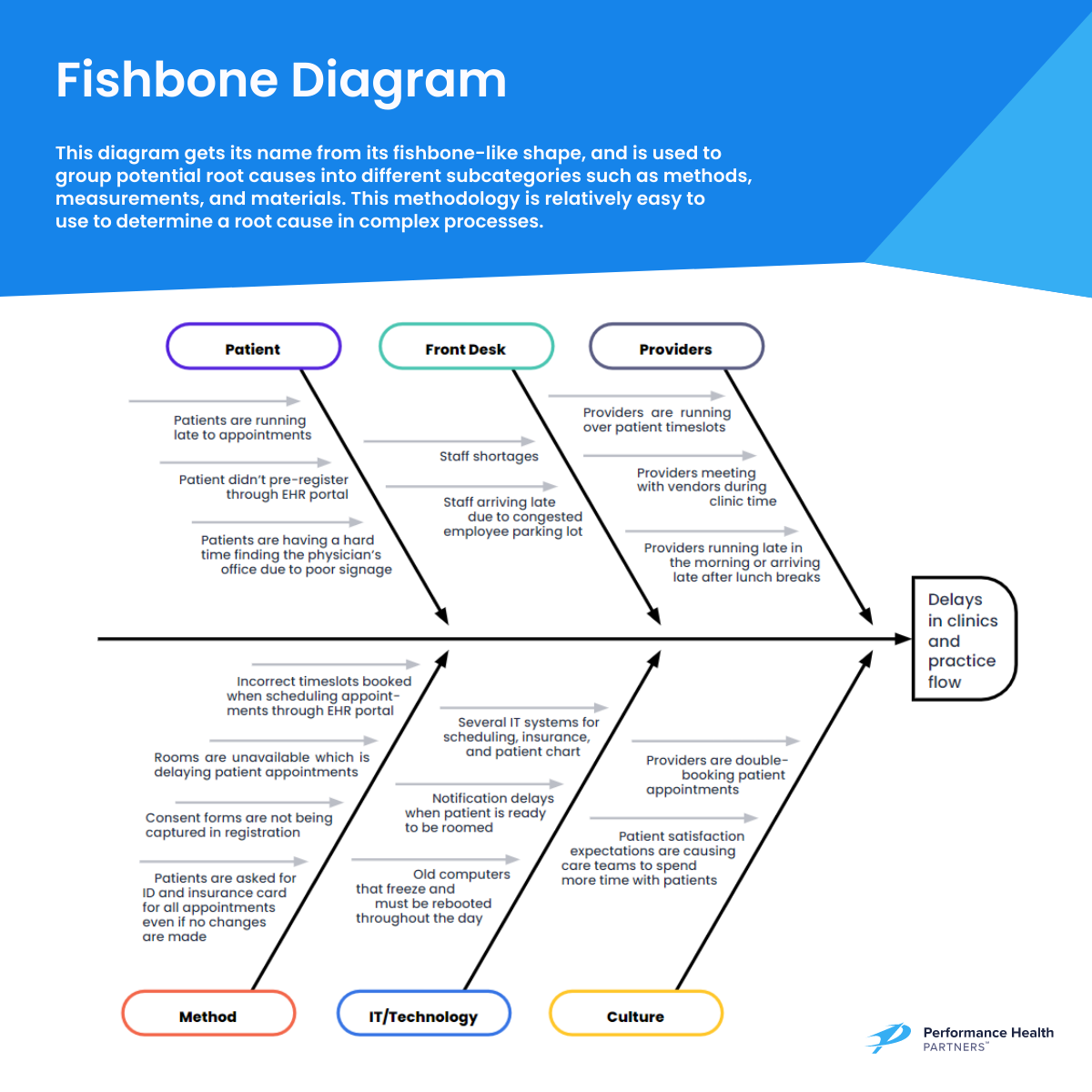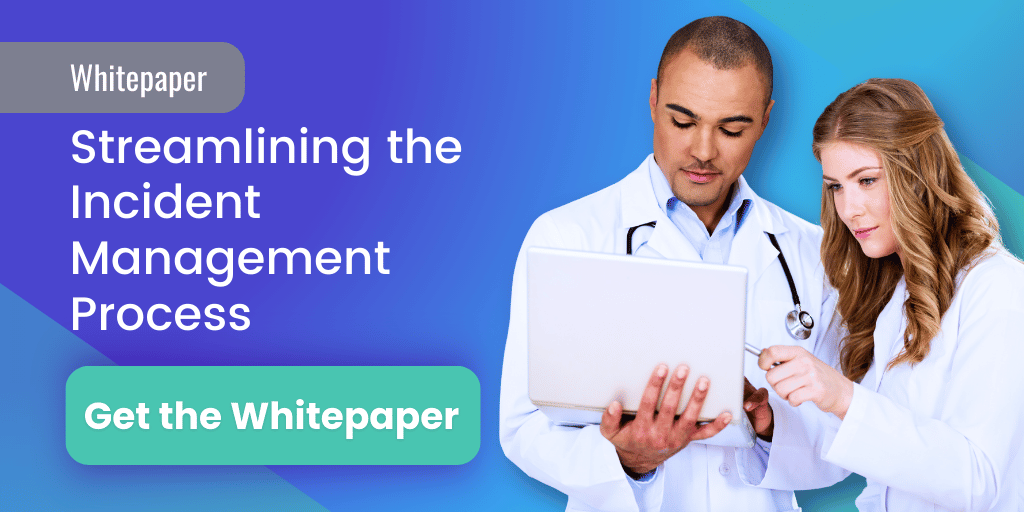4 min read
Why Incident Reporting in Healthcare is Important
Performance Health Partners
April 1, 2024

As healthcare delivery evolves beyond hospital settings to outpatient clinics, specialty centers, and telemedicine, our tools for patient safety and quality improvement must also adapt. Consequently, the role of incident reporting in healthcare is crucial in organizations’ abilities to improve and expand their patient safety efforts.
Incident Reporting as a Tool
Incident reporting in healthcare, a key component of incident management, involves documenting all incidents, near misses, and other safety events through forms for data aggregation. Effective incident reporting systems allow customization, anonymity, and attachments like photos or videos, and are integral to understanding and preventing adverse events that compromise patient safety.
A comprehensive event reporting system supports risk management throughout a healthcare organization. It should be highly customized to the organization type and its unique needs and should also adapt to the changing healthcare landscape. When executed properly, an Incident Reporting System can help identify the root causes of incidents, providing opportunities for the implementation of corrective actions to improve safety and outcomes.
Other benefits of incident reporting include:
- Early Detection: Incident reporting helps in detecting issues at an early stage, preventing them from escalating into major problems.
- Improved Safety: It enhances safety measures by identifying potential hazards and allowing for timely intervention to mitigate risks.
- Data Analysis: Incident reports provide valuable data for analysis, aiding in the identification of trends and patterns to implement preventive measures.
- Accountability: Enables accountability within the organization by documenting incidents and assigning responsibility for resolution.
- Continuous Improvement: Facilitates a culture of continuous improvement by analyzing incidents and implementing corrective actions to prevent recurrence.
Despite the importance and benefits of incident reporting, the underreporting of incidents remains a significant challenge in healthcare settings.
According to a study released by the United States Department of Health and Human Services (HHS), roughly 86% of patient safety incidents occurring in healthcare organizations go unreported.
Therefore, it’s imperative to actively encourage and incentivize comprehensive reporting among healthcare staff. Educating and training staff on the critical importance of incident reporting can lead to a substantial increase in submission rates.
Creating a supportive environment that eliminates fear of retribution is also crucial. By promoting principles of transparency, fairness, and collaboration — the core tenets of a Just Culture — healthcare organizations can foster an atmosphere that encourages staff to report incidents without hesitation.
Incident Reporting Automation
Traditional incident reporting methods such as paper forms and spreadsheets are prone to errors and delays. However, with incident reporting software, the process is seamless and automated, streamlining data collection, analysis, and resolution.
Automating incident reporting in healthcare enhances safety, accessibility, and accuracy. It enables timely documentation, which is crucial for retaining important details, and facilitates the integration of data from various sources for comprehensive analysis. Automation also encourages a culture of vigilance, where everyone feels responsible for reporting incidents.
A Comprehensive Incident Management Strategy
A comprehensive incident management strategy encompasses the mechanisms and resources necessary to monitor a healthcare issue from its initial report to its resolution. This strategy aims to pinpoint situations such as:
- Instances where the actions of a visitor, staff member, or medical professional compromise the standards of care, patient safety, or financial aspects.
- Circumstances involving the malfunction or failure of medical equipment or processes
- Situations where existing policies are either not followed or need updating.
Moreover, an effective incident management plan not only focuses on identifying and addressing areas of concern but also on recognizing and valuing positive contributions to safety. Acknowledging successful practices is as critical as identifying shortcomings or near misses in the effort to enhance our healthcare systems.
A well-rounded incident management approach also delivers insights into the varied yet interconnected areas of healthcare management, including:
- Management of quality-related issues
- Risk management strategies
- Reporting of patient-related events
- Management of healthcare provider performance
- Conducting peer reviews
This strategy ensures a holistic view of healthcare operations, promoting a culture of safety and improvement.
Essential Features for Safety and Event Reporting
Seek an event reporting system that meets your immediate and future incident data gathering and analysis needs. Ensure it matches the comprehensive capabilities of leading platforms, including:
- Robust privacy and security measures: The system should guarantee confidentiality for reporters and restrict data access. It should offer anonymous reporting options and customizable notifications. Notably, 74% of employees are more likely to provide feedback if it’s anonymous, potentially increasing the number of reports and enhancing safety culture.
- Flexible action item creation: Users should be able to generate numerous action items for effective communication and follow-up. The system should also enable customization of notification settings based on specific indicators, locations, or facilities.
- Efficient reporting and exporting: The platform must facilitate real-time generation and exportation of incident reports for analysis and trend monitoring. It should provide a selection of standard and customizable reports, accessible on any device, ensuring the production of professional documents suitable for review by key stakeholders.
- Customizable event tracking: The system should allow for the tailoring of event and incident recording with various indicators and severity levels, enabling comprehensive tracking of multiple aspects of a single incident.
Methods for Analyzing Incident Reports
Several techniques for dissecting reported incidents are used to uncover root causes and mitigate impacts. The following methodologies vary in how deeply and in what manner they scrutinize and categorize incident data:
- Systematic Incident Reconstruction and Evaluation (SIRE): Targeted at addressing incidents with significant repercussions or recurring issues, SIRE employs a variety of analytical approaches, including timelines, processes, and barriers. This approach is known for its thoroughness but requires considerable effort.
- Ishikawa Diagram (Fishbone Diagram): This technique involves creating a cause-and-effect diagram in a structured manner to pinpoint the root cause, typically in three stages: defining the problem, identifying primary causes, and breaking down those primary causes into more specific factors. Its main benefit lies in its straightforward application.

- Prevention and Recovery Information System for Monitoring and Analysis (PRISMA): Also referred to as root cause analysis, PRISMA visualizes incidents through a "cause tree," highlighting the underlying elements and conditions. This method is prized for its depth of analysis and ability to uncover recurring root cause patterns, fostering a culture of reporting among staff.
- Failure Mode and Effects Analysis (FMEA): As a forward-looking risk assessment tool, FMEA employs flowcharts in a step-by-step process to scrutinize potential failure points in products, services, and processes, focusing on identifying causes and consequences of failures. While it concentrates on preempting failures rather than predicting their likelihood, it is instrumental in mitigating potential impacts.
- Functional Resonance Analysis Method (FRAM): Representing the Safety II approach, FRAM analyzes the variability in everyday performance to understand outcomes. It contrasts intended policies with actual practices by reviewing daily operations and how individuals adapt to deviations. Key benefits include its emphasis on transparency and proactive prevention, acknowledging the gap between standard procedures and real-world application.
Ready to Get Started?
Discover how Performance Health Partners can assist your organization in managing incident reporting in healthcare effectively. Click here to get started.



